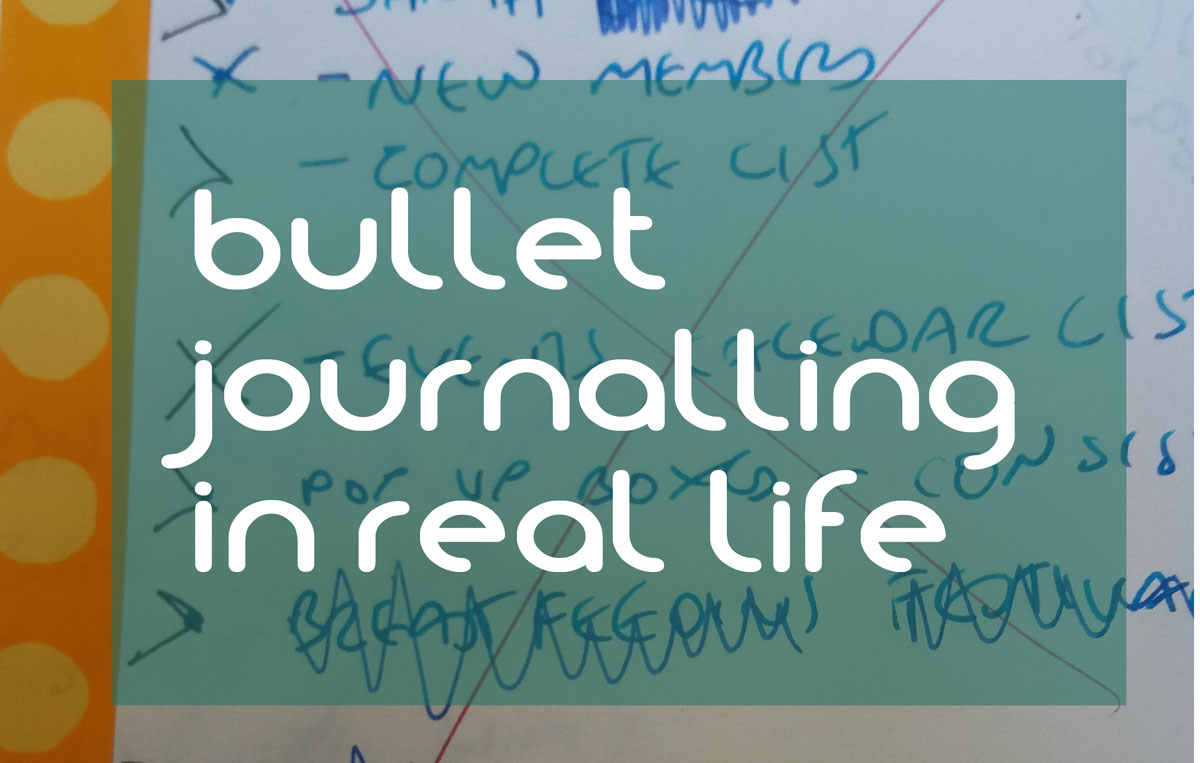
Real Life Bullet Journalling – when the Cat Pukes on February
In a nutshell – there is no need to be intimidated by beautiful to-do lists and elegant diaries. I use the bullet journal method to suit me.
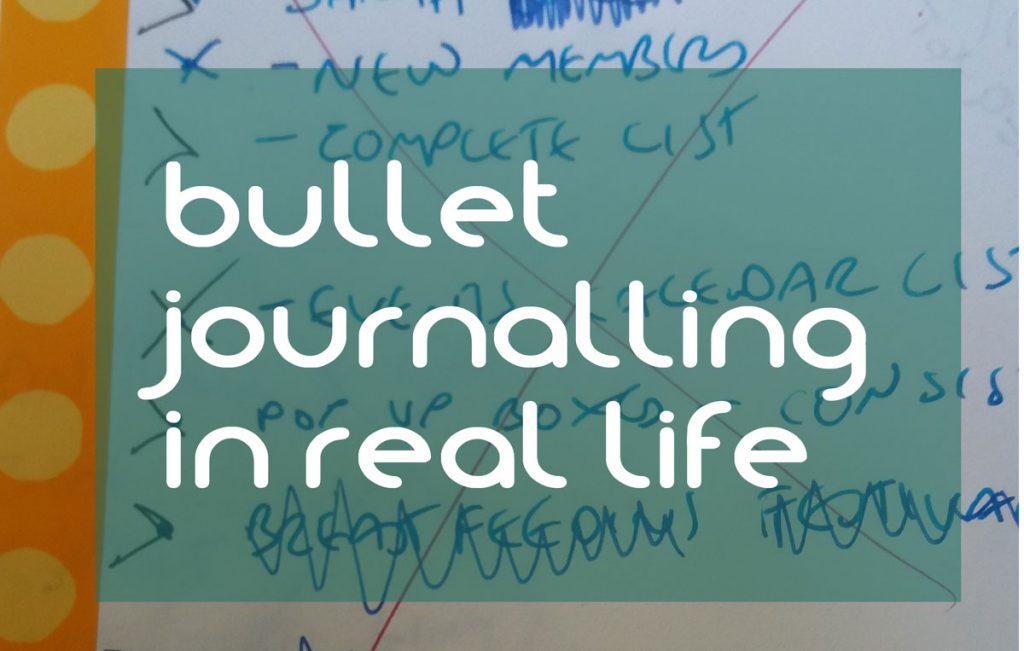
As well as running less-stuff I’m a self employed single parent with around 40 clients at Naked Website Design, an old house that needs almost constant maintenance, a son who needs to get to places on time and 2 cats, one on medication who needs frequent checkups. I’m not complaining about my life at all, it’s great, I’m just trying to get across my need to manage all this easily. I use a very pared down version of bullet journalling and it really works for me.
What is bullet journalling?
The bare bones of bullet journalling are incredibly simple.
- Use easy notation to see what needs to be done, what has been done and what can be done later
- Use page numbers and an index so you can find things
This video shows a more traditional method of bullet journalling that includes a log for the future, monthly logs and other things I don’t use. You can make this as complicated as you want, personally I keep it very simple.
A quick google of bullet journal will bring up a ream of gorgeously laid out pages and plans. There are people who spend so much time making their journals beautiful I do not see how they can possibly get any of the stuff on their lists done – unless the list only included things to do to make the journal beautiful.
Personally, although I did aspire to using a bullet journal like on Pinterest for a while I have slipped into a comfortable way of using it to my advantage. It is messy and looks chaotic but it works well for me. And I am aware that my handwriting looks like squashed spiders, I can generally work out what I mean.
Bullet Journal Notation
I keep it really simple and use
a dot . for a task that needs to be done
a forward sign > for a task I have moved to the future
a cross through the dot X for a task I have done
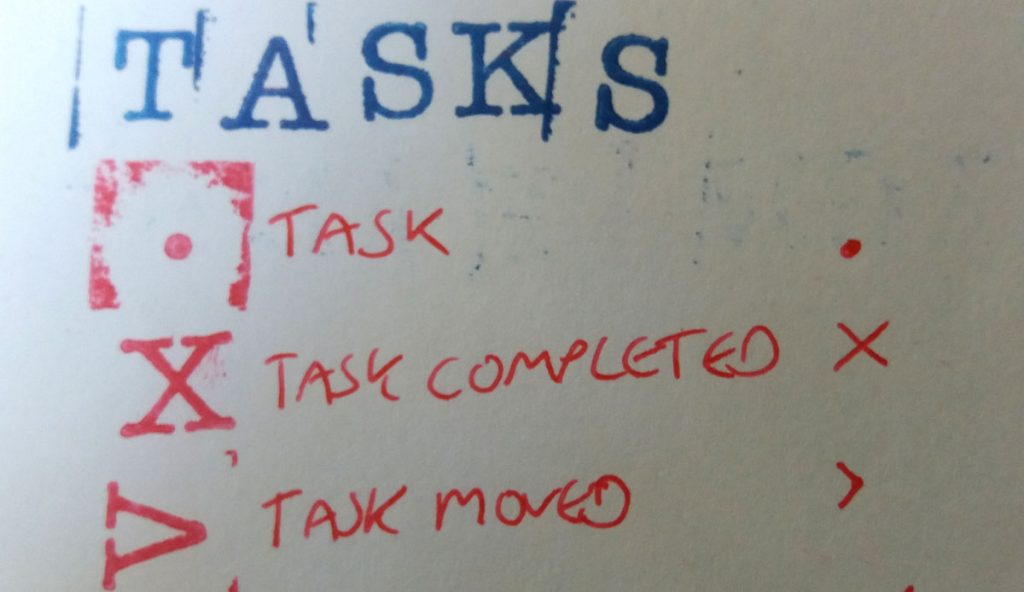
There are loads of other things you can use, I tried using an open circle for an event, an exclamation mark for something to research and various other marks I forgot almost instantly. Keeping it simple works for me. I don’t use the bullet journal as a diary because that is on my phone and I don’t see the need to duplicate it.
Setting up an easy bullet journal
Trigger warning – if you are like me and get a bit excitable around stationery you might want to skip to the next section – any notebook will do as a bullet journal.
It helps to have these things but you can do them by hand:
- numbered pages
- space for a table of contents
Blank or lined notebooks are the easiest to get but I’m quite keen on dots. The dots will come in handy when I have more hours in the day and the inclination to practice little pretty dividing lines like on Pinterest. That day will never happen and I am resigned to that. I no longer aspire to make my journal pretty. Functional is good enough. My current book is blank with a dotted or lined guide you are supposed to put behind the page as you use it. In reality, I just scrawl.
It is easy to get very tempted by beautiful notebooks though. I started with a gridded Moleskine Professional which is set up with page numbers, contents and an index. I really liked the way this had a designated place at the top of the page for key tasks but that became restrictive for other things.
[amazon_link asins=’B00UG3J29Q,B00UG3J41C,B00UG3J2BE,B00UG3J3EK,B00UG3J2C8′ template=’ProductAd’ store=’lessstuff08-21′ marketplace=’UK’ link_id=’d760638a-16cb-11e7-bd1e-197c20b7aab9′]At the moment I’m using a Leuchtturm A5 book that has a contents page, index and page numbers but the pages are blank. I preferred the Moleskine but next year (I start a new book every year) I’m going to get a blank book from Tiger and save £15.
[amazon_link asins=’B00FWRVTMO,B00I3WR76W,B016WKV8UC,B003EVHV6S,B00SBDNA0U’ template=’ProductAd’ store=’lessstuff08-21′ marketplace=’UK’ link_id=’8607f52d-16cb-11e7-b37b-9332fa29805b’]Getting it all on paper
I try to write a huge list of everything I need to do at the start of the month. Sometimes I do this weekly, sometimes I forget about it. There is a podcast by David Allen of Getting Things Done that talks you through a ‘mind sweep’ which is essentially what I do. You can listen to it from the website, you don’t need a podcast app.
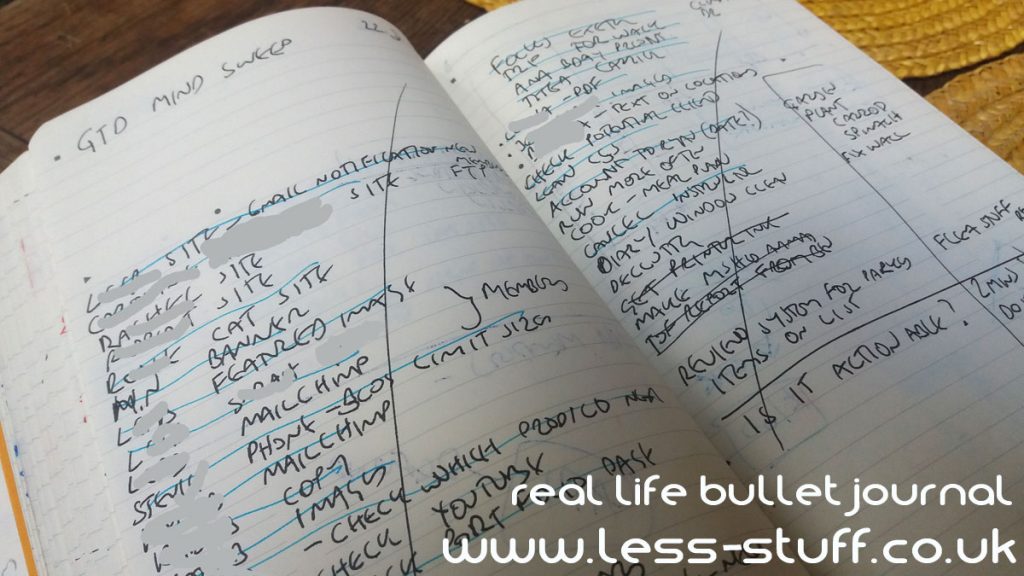
A mind sweep, all crossed out now because it’s been dealt with.
I just list everything I can think of in one big messy page. From nitty gritty techy stuff I need to do on clients websites down to getting cat food, it all goes down on one page. From that one page I can make smaller lists, each with a dot next to the item.
[amazon_link asins=’0349408947,0399167005,1534698663,1491010304,B0171PJMHS,1514282038′ template=’ProductAd’ store=’lessstuff08-21′ marketplace=’UK’ link_id=’11dbfef3-16c8-11e7-839e-b9ca9f6f26f9′]Using the journal
Once the big list of everything is done I break it down into pages, one page for each client or day of the week and different pages for things that are happening in my life. At the moment there is a page for the garden because I need to start off seeds and the beginning of a grocery shopping list because I remembered we need bananas and potatoes when I was doing the mind sweep.
If any of the pages are likely to be important for the future, add the to the table of contents so you can find it easily. I’ve one for menu ideas that I go back to quite a lot.
As things get done they get crossed off. At the end of the week or month I review the previous pages and move things that have not been done to a new list, they get marked as a > on the original. When I’ve gone back and reviewed a list and everything is either done or moved forward to a new list, I cross out the whole page. That way I don’t have to look back in the journal for things that need doing. At most I need to go back 10 pages to review everything.
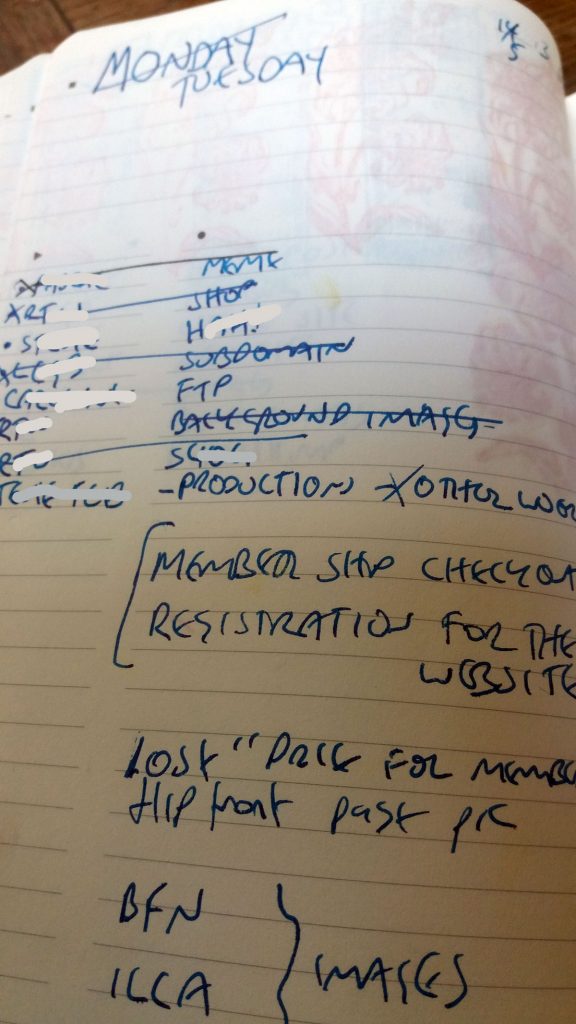
Monday didn’t pan out so this got moved to Tuesday. No rulers were harmed in the making of this journal entry.
It doesn’t need to be complicated, I would like to be able to devote time to making it look beautiful but it does all work for me. Things get done.
This type of bullet journalling works well for me. It lets me keep control of what I’m doing and what needs to be done. So if you think it needs to be complicated, or even neat to work think again. The cat did puke on February, which sort of summed up the month but I’d just moved what was left of the list over to March so it was good timing.
Easy bullet journalling quick reference
- Use a book with page numbers
- Make a table of contents
- Make one huge list occasionally and split it into smaller lists
- Give important things their own entry in the table of contents
- Mark to-do things with a dot
- Cross things through when they are done X
- Review lists weekly or monthly and move pending things forward to a new list >

